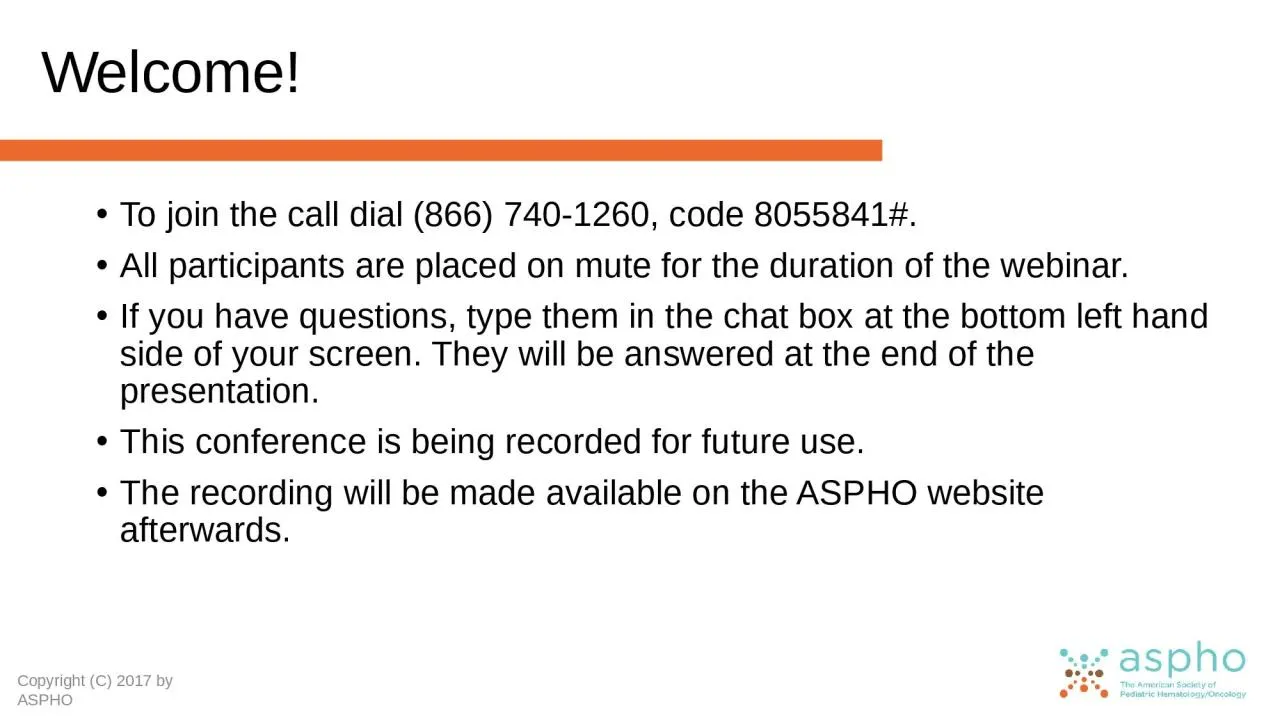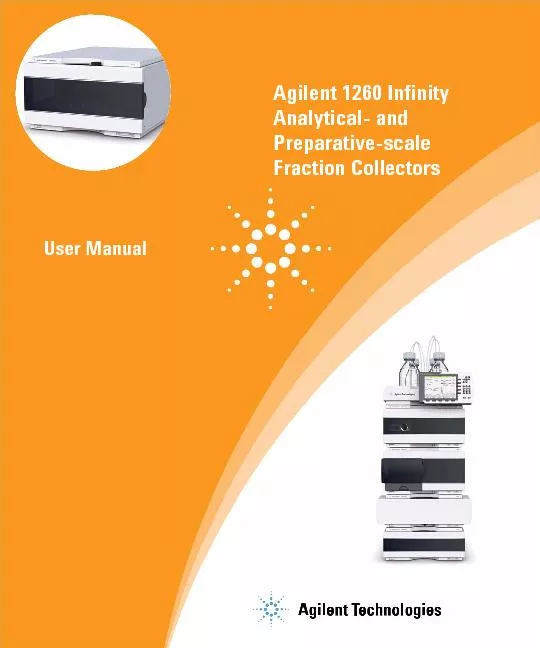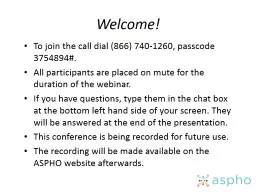PPT-To join the call dial (866) 740-1260, code 8055841#.
Author : grace3 | Published Date : 2022-06-07
All participants are placed on mute for the duration of the webinar If you have questions type them in the chat box at the bottom left hand side of your screen They
Presentation Embed Code
Download Presentation
Download Presentation The PPT/PDF document "To join the call dial (866) 740-1260, co..." is the property of its rightful owner. Permission is granted to download and print the materials on this website for personal, non-commercial use only, and to display it on your personal computer provided you do not modify the materials and that you retain all copyright notices contained in the materials. By downloading content from our website, you accept the terms of this agreement.
To join the call dial (866) 740-1260, code 8055841#.: Transcript
Download Rules Of Document
"To join the call dial (866) 740-1260, code 8055841#."The content belongs to its owner. You may download and print it for personal use, without modification, and keep all copyright notices. By downloading, you agree to these terms.
Related Documents














